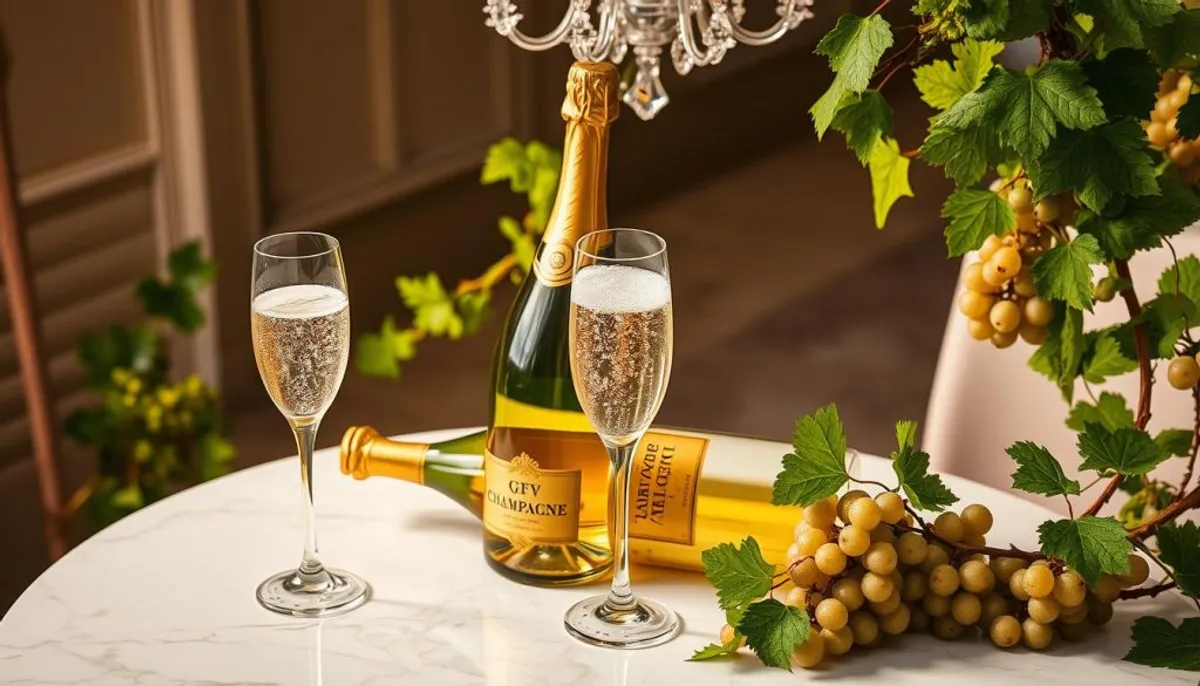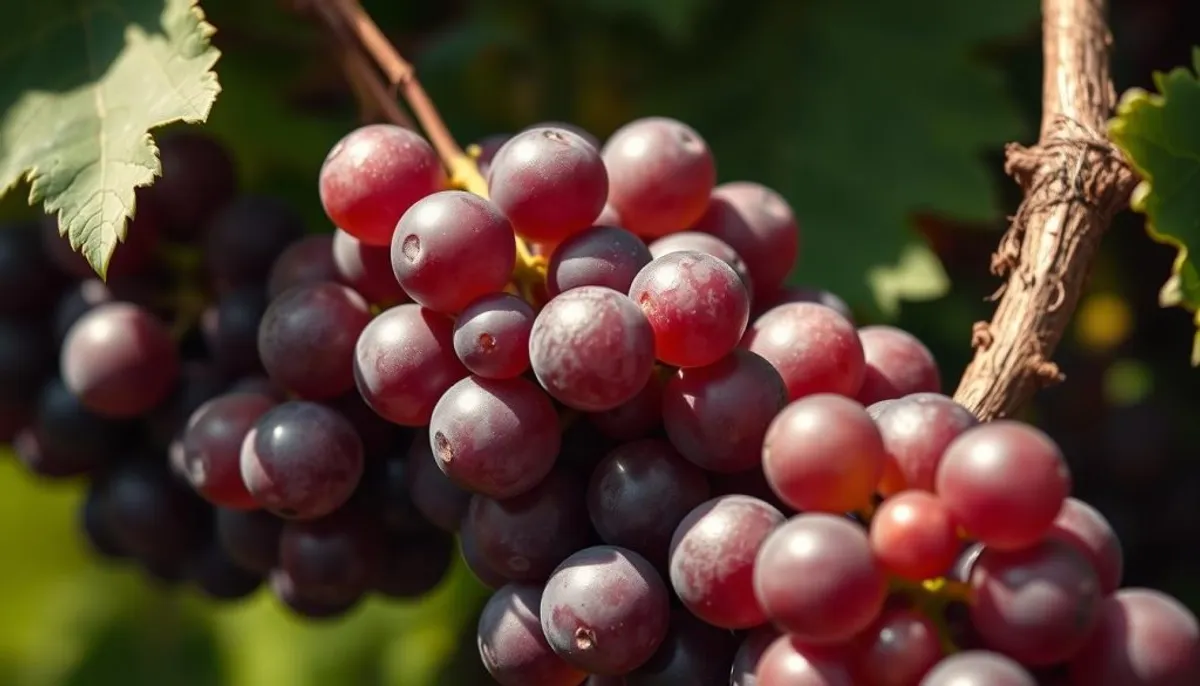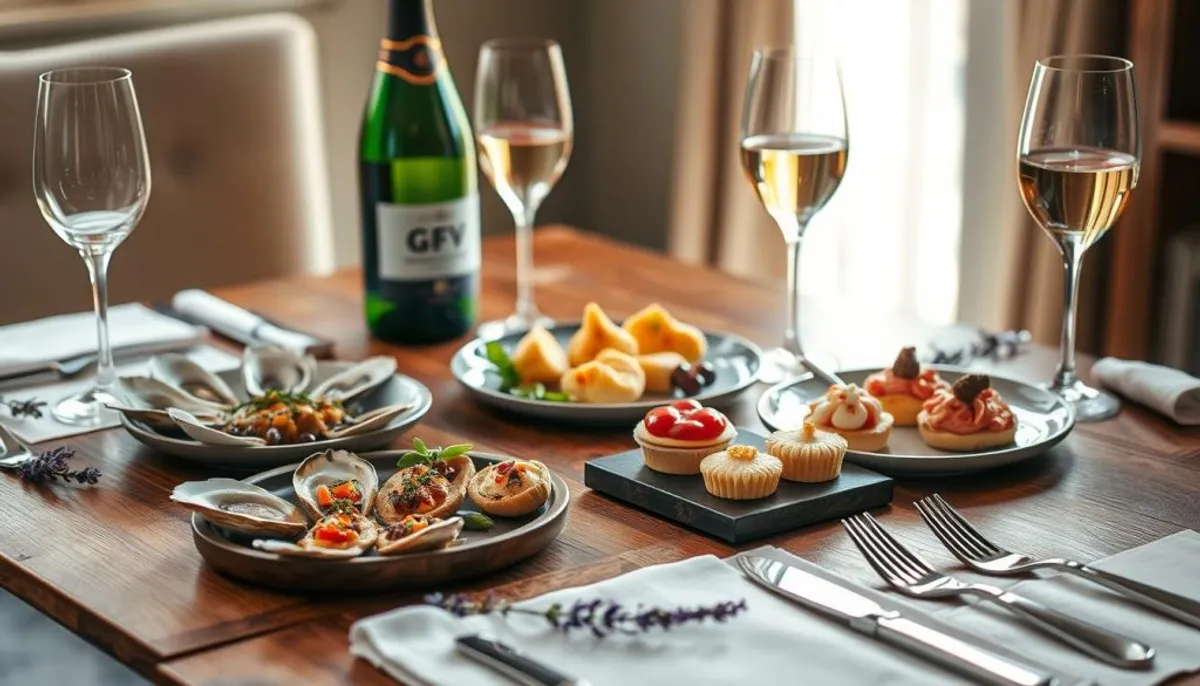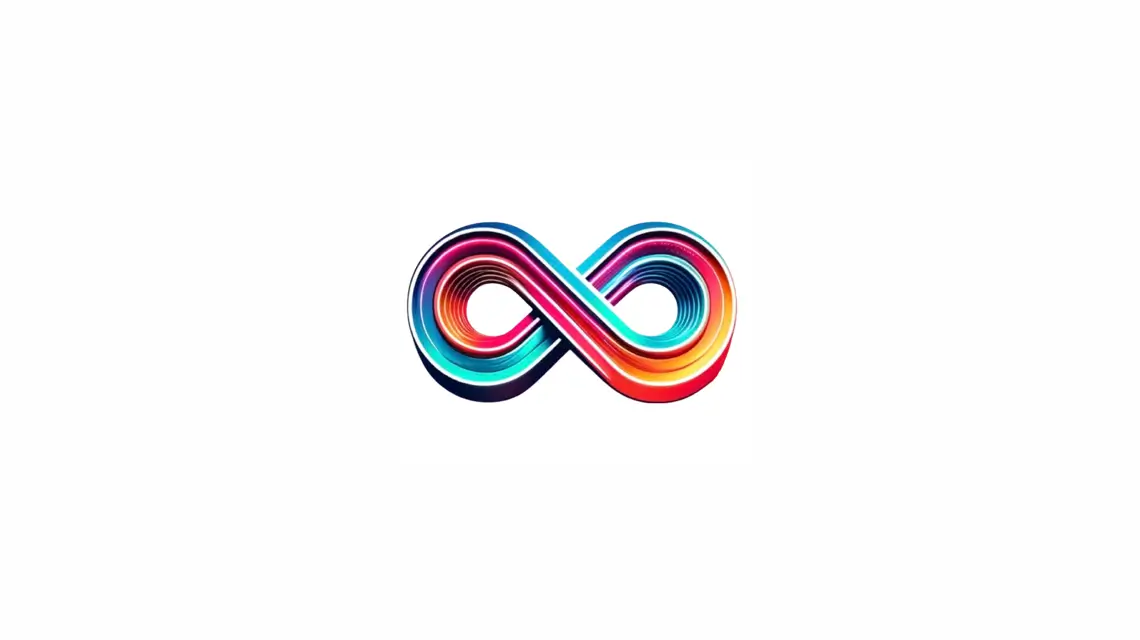Welcome to the realm of GFV Champagne, where luxury and effervescence converge. This premium French sparkling wine is a testament to centuries of tradition and meticulous craftsmanship. It shines as a symbol of excellence within the luxury beverage domain.

Did you know that Americans now lead the world in wine consumption? By 2014, they surpassed the French, consuming nearly 30 million hectoliters annually. This shift underscores the increasing demand for fine wines, including GFV Champagne and cook's california champagne brut.
Are you prepared to discover the finest GFV Champagne selections? Whether you’re an experienced connoisseur or new to sparkling wines, we’ve got you covered. Our comprehensive guide will lead you through the opulent world of French sparkling wines.
Seeking the perfect bottle of GFV Champagne? You’re in luck. These exquisite bubbles are available for export globally. To elevate your next celebration, request your personalized quote today at https://champagne-export.com.
Key Takeaways
- GFV Champagne represents luxury French sparkling wine
- Americans are now the world’s top wine consumers
- GFV Champagne is available for global export
- Personalized quotes can be requested online
- This guide offers insights into French sparkling wine heritage
Introduction to French Sparkling Wine Heritage
The champagne region epitomizes French winemaking excellence. Its rich history and unique terroir have profoundly influenced sparkling wine production for centuries. The region’s cool climate and chalky soils are ideal for crafting exceptional bubbles.
The Historical Significance of Champagne Region
Champagne’s legacy traces back to the 17th century, when Dom Pérignon perfected the méthode champenoise. This innovation transformed sparkling wine production, establishing a global quality benchmark. Today, the region continues to innovate while preserving its traditions.
Understanding Protected Designation of Origin
The Protected Designation of Origin (PDO) status ensures Champagne’s authenticity. This stringent regulation guarantees that only sparkling wines produced in the Champagne region, adhering to specific methods, can be labeled as Champagne. It reflects the region’s dedication to quality and tradition.
The Art of French Winemaking
In Champagne, French winemaking is a harmonious blend of science and artistry. Winemakers skillfully combine different grape varieties and vintages to produce consistent, high-quality wines. The region’s elite houses, such as Pierre Paillard, exemplify this expertise through their outstanding cuvées.
| Aspect | Impact on Champagne Production |
|---|---|
| Climate Change | Increasing temperatures affect grape ripening and wine typicity |
| Market Share | Top 5 wine companies represent less than 10% of global market |
| Consumption Trends | US overtook France as largest wine consumer in 2014 |
| Future Growth | US wine market projected to grow by over 10% in next 3 years |
Despite challenges from climate change, the champagne region’s winemakers remain steadfast. They adapt their methods to preserve the unique character of their wines. This ensures that French winemaking traditions endure in this iconic sparkling wine region.
GFV Champagne: A Premium Selection
GFV Champagne is a paragon of excellence in the realm of French sparkling wines. This esteemed brand employs premium grapes, meticulously chosen from the most distinguished vineyards in the Champagne region. Each bottle encapsulates the quintessence of luxury and sophistication, appealing to discerning connoisseurs globally. One such exceptional offering is the champagne elemart robion vb03, which exemplifies the brand's commitment to quality.
The GFV collection showcases an array of outstanding cuvées, from classic non-vintage blends to rare vintage selections. Enthusiasts can revel in the complexity of GFV’s prestige cuvée, a true masterpiece that epitomizes the zenith of Champagne craftsmanship. This exclusive line harmoniously blends tradition and innovation, capturing the essence of Champagne’s unique terroir in every sip.
GFV Champagne is dedicated to quality and making its luxury accessible worldwide. Whether you’re in New York, Tokyo, or Sydney, you can experience the elegance of GFV’s premium sparkling wines. Each bottle is a testament to Champagne’s rich heritage and unmatched expertise in production.
- Expertly crafted from premium grapes
- Range includes classic blends and rare vintages
- Exclusive prestige cuvée available
- Discover our exclusive veuve clicquot offerings
- Global distribution for worldwide enjoyment
The Méthode Traditionnelle Process
The méthode traditionnelle stands as the cornerstone of sparkling wine production in Champagne. This revered method is responsible for the bubbles and complexity that define these wines. It’s a journey that transforms still wine into the effervescent luxury we recognize as Champagne.
Primary Fermentation
The process commences with primary fermentation. Grapes are first pressed, and the juice undergoes fermentation in tanks or barrels. This stage produces a base wine devoid of bubbles. The winemaker then blends various base wines to craft the desired flavor profile.
Secondary Fermentation
The true alchemy occurs during secondary fermentation. The base wine, now blended, is bottled with yeast and sugar. As the yeast consumes the sugar, it releases carbon dioxide. This CO2, trapped within the wine, forms the distinctive bubbles.
Aging Requirements
Aging is pivotal for the development of complex flavors in sparkling wine. Non-vintage Champagne must age for at least 15 months, while vintage Champagne requires a minimum of 36 months. During this period, the wine rests on its lees, enhancing its richness and depth.
| Champagne Type | Minimum Aging | Flavor Development |
|---|---|---|
| Non-Vintage | 15 months | Fresh, vibrant |
| Vintage | 36 months | Complex, nuanced |
The méthode traditionnelle is a labor-intensive process that demands patience and expertise. It’s this commitment to craftsmanship that distinguishes Champagne in the realm of sparkling wines.
Essential Champagne Grape Varieties
Champagne’s distinctiveness is rooted in its premium grapes. The sparkling wines of this region owe their unique character to three primary varieties: Chardonnay, Pinot Noir, and Pinot Meunier. Each grape contributes its own set of traits to the blend, crafting the quintessential champagne taste.

Chardonnay’s Role
Chardonnay brings finesse and elegance to champagne. It is the sole grape in Blanc de Blancs, exemplified by Champagne Devaux Cœur des Bar. This variety introduces citrus notes, such as bergamot and lemon. Chardonnay-based champagnes often exhibit a fresh, juicy taste that is crisp on the palate.
Pinot Noir Contribution
Pinot Noir adds body and structure to champagne blends. It is the centerpiece in Blanc de Noirs champagnes. This grape imparts depth and red fruit flavors. The Cœur des Bar Blanc de Noir, crafted solely from Pinot Noir, showcases its rich character.
Pinot Meunier Characteristics
Pinot Meunier rounds out champagne blends with fruitiness and approachability. It introduces a softer touch to the wine. This grape balances the acidity of Chardonnay and the structure of Pinot Noir. Pinot Meunier enhances the overall complexity of many champagne styles.
The art of blending these premium grapes is what creates champagne’s unique profiles. Winemakers skillfully combine them to craft wines with balance, depth, and character. The result is champagnes that span from light and crisp to rich and complex, each reflecting its terroir and craftsmanship.
Understanding Champagne Styles
Champagne, the pinnacle of luxury beverages, presents a variety of styles to cater to diverse preferences. If you're looking to elevate your celebrations, you can buy champagne online to explore options ranging from bone-dry to indulgently sweet, each offering a distinct experience for aficionados of sparkling wine.
The sweetness level in Champagne is defined by the sugar added during the dosage stage. This critical step harmonizes the wine’s acidity, shaping its overall essence.
| Style | Sugar Content (g/L) | Taste Profile |
|---|---|---|
| Brut Nature | 0-3 | Bone dry, no added sugar |
| Extra Brut | 0-6 | Very dry, minimal sweetness |
| Brut | 0-12 | Dry, most common style |
| Extra Dry | 12-17 | Slightly sweet |
| Sec | 17-32 | Noticeably sweet |
| Demi-Sec | 32-50 | Sweet, ideal for desserts |
| Doux | 50+ | Very sweet, rare style |
GFV Champagne presents a spectrum of styles to accommodate varied tastes. Their Brut Nature exemplifies the grapes’ purity, while their Demi-Sec complements rich desserts. By grasping these styles, you can select the ideal Champagne for any event.
Vintage vs Non-Vintage Champagne
Champagne aficionados often engage in discussions about the superiority of vintage versus non-vintage blends. Each style presents a distinct experience, highlighting the craftsmanship of French winemaking. We will examine the primary distinctions between these two categories of sparkling wine.
Vintage Year Requirements
Vintage champagne is crafted from grapes picked in a single, outstanding year. French legislation dictates that vintage champagne must mature for at least 36 months before it reaches the market. This prolonged aging period enhances its complexity and richness of taste. In contrast, non-vintage champagne is a blend of wines from various years, necessitating only 15 months of aging.
Non-Vintage Blending Art
Non-vintage champagne exemplifies the winemaker’s expertise in crafting a consistent house style. By combining wines from different vintages, producers strive to preserve a distinctive taste profile. For instance, Gardet Brut Tradition NV 79 demonstrates the excellence attainable in non-vintage champagnes, offering a harmonious blend of freshness and complexity.
Aging Differences
The aging process profoundly influences the final product. Vintage champagne develops rich, nuanced flavors over time, often featuring notes of brioche and toasted nuts. Non-vintage blends, while still enjoyable, tend to exhibit brighter fruit flavors and a more vibrant character. For those looking to explore the market, a veuve clicquot preis guide can be an invaluable resource. Connoisseurs value both styles for their unique qualities, with vintage champagne generally commanding higher prices due to its rarity and aging potential.
| Characteristic | Vintage Champagne | Non-Vintage Champagne |
|---|---|---|
| Grapes | Single year harvest | Multi-year blend |
| Minimum Aging | 36 months | 15 months |
| Flavor Profile | Complex, developed | Fresh, consistent |
| Production Frequency | Only in exceptional years | Annual |
Champagne Terroir and Climate
The champagne region is renowned for its unique terroir, which profoundly influences the character of its sparkling wines. This area’s distinct soil, climate, and geography create an environment ideal for producing exceptional champagne. The combination of these factors is what sets champagne apart from other wines.
Champagne’s cool climate, with temperatures ranging from 14°C to 17°C, is perfect for early-ripening grape varieties. The region’s annual rainfall, typically between 500 and 800 mm, aids in the grapes’ optimal development. This climate is crucial for the grapes’ ripening process.
The soil in the champagne region is predominantly chalk and limestone. These soils offer excellent drainage and mineral content. The minerality imparted by these soils enhances the wines’ complexity and flavor profile.
Climate change is affecting the champagne region, leading to earlier grape phenology in recent decades. This shift impacts harvest timing and potentially alters the wine’s traditional characteristics. Projections indicate that by 2050, suitable areas for grape cultivation in Europe could decrease by 19% to 62% under moderate emissions scenarios.
| Factor | Impact on Champagne |
|---|---|
| Temperature | Affects grape ripening and sugar content |
| Rainfall | Influences grape growth and disease risk |
| Soil | Imparts minerality and affects drainage |
| Climate Change | Alters grape phenology and harvest timing |
Despite these challenges, the champagne region’s unique terroir continues to produce exceptional sparkling wines. It adapts to changing conditions while maintaining its centuries-old traditions and unparalleled quality. The region’s resilience is a testament to its enduring excellence.
Food Pairing and Serving Suggestions
GFV Champagne stands out as the quintessential celebratory drink, ideal for any event. Among the options available, you can find top-rated english sparklers that enhance the celebratory experience. To fully appreciate its nuances, adhere to these serving guidelines and food pairing suggestions.
Temperature Guidelines
Optimal serving temperature for GFV Champagne is between 45-50°F (7-10°C). This range accentuates the wine’s crisp acidity and delicate effervescence. It’s crucial to avoid over-chilling, as it can obscure the champagne’s subtle flavors.
Glassware Selection
For the preservation of bubbles and enhancement of aromas, select tall, narrow flutes. Wider, bowled glasses are recommended for vintage champagnes, allowing the complex bouquet to flourish. Shallow, wide coupes are less ideal, as they hasten the loss of bubbles and aromas.
Complementary Dishes
GFV Champagne complements a wide array of culinary delights. Here are some pairing suggestions:
- Brut: Ideal with oysters, caviar, or light seafood
- Rosé: Excellent with grilled salmon or strawberry desserts
- Demi-Sec: Complements fruit tarts and mild cheeses
- Blanc de Blancs: Perfect with sushi or light chicken dishes
For a distinctive pairing, consider GFV Champagne with spicy Chinese cuisine. Its crisp acidity effectively counterbalances rich flavors, showcasing its versatility across diverse culinary landscapes.

GFV Champagne transcends its traditional role as a toast beverage. Its adaptability makes it an excellent choice throughout a meal, from appetizers to desserts. One delightful option to explore is the rossini champagne cocktail, which can elevate your dining experience. Exploring different pairings can lead to discovering your preferred combinations.
Storage and Aging Potential
Proper storage is essential for preserving the quality of GFV Champagne, a true luxury beverage. To keep its exquisite taste and effervescence, store bottles horizontally in a cool, dark place with consistent temperature. Ideal conditions are between 45°F to 55°F (7°C to 13°C) with humidity levels of 70% to 80%.
The aging potential of GFV Champagne varies by style. Non-vintage varieties typically reach their peak within 3 to 5 years of release. Vintage Champagnes, by contrast, can improve with age for decades. Some premium cuvées may develop complex flavors for up to 30 years or more.
To determine if your GFV Champagne is ready for consumption, consider these factors:
- Age since release
- Storage conditions
- Champagne style (vintage or non-vintage)
- Producer’s recommendations
Aging can enhance the depth and complexity of flavors in GFV Champagne. Over time, you may notice a shift from fresh fruit notes to more nuanced aromas of dried fruits, nuts, and honey. The bubbles become finer and more integrated, resulting in a smoother texture. This elevates this luxury beverage to new heights of sophistication.
Champagne House Classifications
In Champagne, French winemaking follows a rigorous classification system. This framework is essential for assessing the quality and pricing of sparkling wines. It distinguishes between Grand Cru and Premier Cru designations.
Grand Cru Designations
Grand Cru vineyards stand at the zenith of Champagne production. Situated in 17 villages, they are celebrated for their outstanding terroir and grape quality. The wines from these vineyards are highly sought after, commanding premium prices due to their superior status in French winemaking.
Premier Cru Rankings
Premier Cru vineyards occupy the second echelon of the Champagne classification. Spanning 44 villages, they produce grapes of high caliber, contributing to the excellence of champagnes. Though less esteemed than Grand Cru, Premier Cru champagnes are still highly valued in the French winemaking community.
| Classification | Number of Villages | Average Price per Hectare |
|---|---|---|
| Grand Cru | 17 | €1,000,000+ |
| Premier Cru | 44 | €500,000+ |
The classification system has a profound impact on vineyard prices. Grand Cru vineyards in Champagne can command over €1 million per hectare. In contrast, Premier Cru vineyards typically sell for €500,000 or more per hectare. These elevated prices underscore the prestige and potential profitability associated with top-tier French winemaking in the Champagne region.
Investing in the rwandan wine market through Groupements Fonciers Viticoles (GFV) presents a unique opportunity to engage in French winemaking. GFVs enable investors to acquire shares in esteemed vineyards, starting at a few thousand euros. This model makes fine wine investment more attainable, offering potential tax benefits and the pleasure of receiving bottles as part of the returns.
Investment and Collection Value
Champagne, notably prestige cuvée, has emerged as a coveted investment choice, alongside emerging tanzanian champagne brands. The luxury wine market exhibits encouraging trends for both collectors and investors. This development is significant for those looking to diversify their portfolios.
Market Trends
The French wine market faces competition from new entrants in the wine industry. This competition has altered historical consumption patterns. Yet, Champagne’s prestige remains unchallenged. The focus on investment is shifting towards high-quality terroir within renowned regions.
Storage Considerations
Ensuring the value of your Champagne collection requires proper storage. A temperature-controlled environment is essential to prevent premature aging. Ideal conditions include a constant temperature of 55°F (13°C) and humidity levels between 70-80%.
Investment Potential
Champagne, and more so prestige cuvée selections, presents unique investment opportunities. High-net-worth individuals often target these wines for their long-term potential. The market for vineyard land in Champagne is shrouded in confidentiality, adding an exclusive layer to investments.
| Investment Type | Parts | Allocation |
|---|---|---|
| GFV Champagne | 179 | 12 bottles/share/year |
| Vallée du Rhône | 118-226 | 6 bottles/share/year |
| Bourgogne | 51-560 | 6-12 bottles/share/year |
Investments in GFV structures are typically locked in for 25 years, highlighting the long-term commitment required in wine investments. The prestige cuvée market holds promise for both financial gains and the joy of owning exceptional wines.
Conclusion
GFV Champagne epitomizes luxury in the realm of French sparkling wines. It adheres to the méthode traditionnelle and employs premium grape varieties such as Chardonnay, Pinot Noir, and Pinot Meunier. This dedication to excellence distinguishes it from others. The brand’s extensive range caters to diverse tastes, offering everything from crisp non-vintage blends to intricate vintage selections.
The champagne industry’s storied past, coupled with stringent regulations and protected designations, guarantees the superior quality of each GFV Champagne bottle. The unique terroir of the Champagne region, characterized by chalky soils and a cool climate, imbues these wines with their distinctive flavor profiles.
Whether you’re an avid collector or a novice, GFV Champagne presents a unique opportunity. These wines offer a rich tapestry of experiences, from culinary pairings to investment potential. As you venture into the world of GFV Champagne, remember that the right storage and serving techniques can elevate your enjoyment.
Ready to start your GFV Champagne adventure? Visit https://champagne-export.com to request your personalized quote today. Discover the opulence of French sparkling wine firsthand.
RelatedRelated articles



